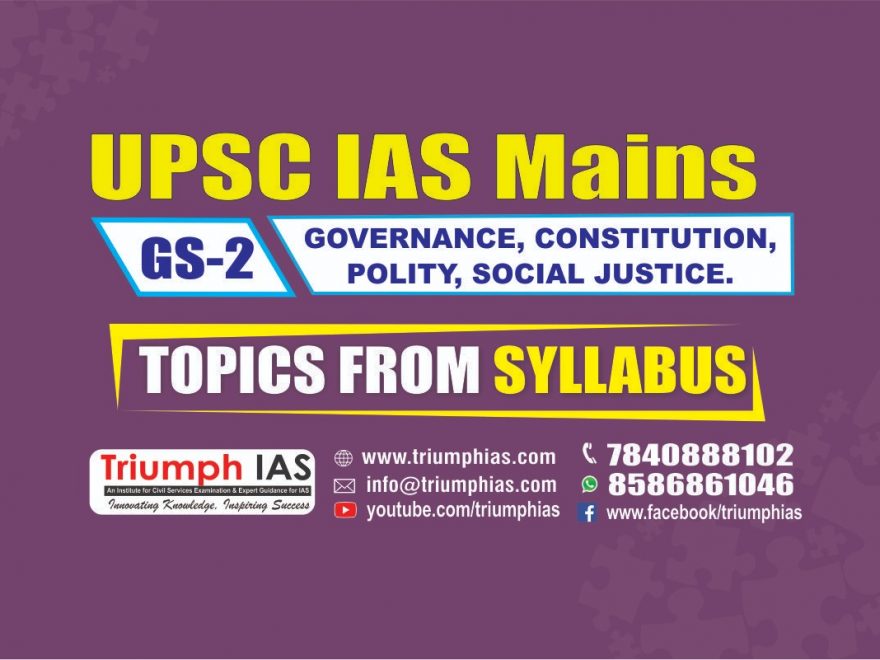Relevance: Mains: G.S paper II:
Why in news?
- Last week, Home Minister introduced the Arms (Amendment) Bill, 2019 in Lok Sabha.
• The Bill seeks to amend the Arms Act, 1959 by reducing the number of firearms allowed
per person from the current three to just one.
• It also proposes new categories of offences and an increase in the penalty for certain offences.
Background:
- The proposed capping of firearms has met with resistance from both ruling and opposition leaders amid reports of some MPs, including ex-royals, trying to persuade the government to refer the bill to a House committee.
• In a letter to Prime Minister, Punjab chief minister has argued that if some states are keen to reduce the number of weapons, they may be allowed to do so without prejudice to the other states.
• The Punjab government is said to support most of the proposed amendments in the bill but has reservations about restricting the number of firearms a licensee can possess to one.
Key features of the Bill:
- The Bill seeks to enhance the punishment for existing offences like illegal manufacture,
sale, transfer, etc.; illegal acquiring, possessing or carrying prohibited arms or prohibited ammunition; and illegal manufacture, sale, transfer, conversion, import, export, etc., of firearms.
• It also proposes to define new offences and prescribing punishment for them, such as for
taking away firearms from police or armed forces, involvement in organized crime
syndicate, illicit trafficking including smuggled firearms of foreign make or prohibited arms and prohibited ammunition, use of firearms in rash and negligent manner in celebratory gunfire endangering human life, etc.
• Further, the Bill seeks to enhance the period of arms license from three years to five years
and also to issue arms license in its electronic form to prevent forgery.
Significance:
- The Amendment assumes significance in recent times as Law enforcement agencies
have indicated growing nexus between possession of illegal firearms and commission of criminal offences.
• With the advancement in technology, the fire power and sophistication of illegal firearms have increased significance over the years.
• The trans-border dimensions of illegal arms trafficking are causing threat to internal
security and to prevent the usage of illicit firearms so trafficked has also become a
prime concern.
• To effectively curb crimes related to or committed by using illegal firearms and to provide effective deterrence against violation of law, there is an urgent need to strengthen the existing legislative framework by making appropriate amendments in the Arms Act, 1959.
• Simultaneously, there is also a requirement for rationalizing and facilitating the licensing procedures for use of firearms by individuals and sports persons.
Issues with the act:
- NIA had assumed jurisdiction over a Scheduled Offence even suo moto whereas the areas of policing and public order lie within the exclusive legislative competence of the States. So the States have been extremely wary of accepting or cooperating with any agency that encroached on that power.
• The NIA has no officers specialising in cyber surveillance, explosives or tracing chemicals and has been forced to ask companies to decrypt computers recovered at crime scenes.
• It has been repeatedly seen that the functioning of the investigation and prosecution agencies depend on political mandate. This raises serious doubts on the credibility on national institutions.
• It is unclear why the Act does not compel the State government to provide the report to Central government with a much shorter window of time.
• The NIA is not empowered to investigate a number of interstate and trans-national crimes that require a national response. For example, human trafficking, drug trafficking, cybercrime and organised crime are not included in the Schedule of Offences to the NIA Act.
Way forward:
- NIA should cooperate with State governments, irrespective of their political affiliation, and win the long term confidence of ordinary people by providing expeditious justice.
• Independent professionals from outside must be hired to include in the decision making process of deciding whether the NIA should investigate a certain Scheduled offence to avoid maintain integrity and impartiality.
• To make NIA different and much more effective, its shortfalls must be debated openly and honestly. It should draw in a variety of voices, and incorporate checks and balances that will minimise thepossibility of failure.
• It should be given necessary powers to prevent the enumerated offences rather than simply powers of investigation and enforcement.
• It should be allowed to share, collect, collate, analyse and disseminate the intelligence
with other intelligence agencies to integrate and enhance India’s security system.
Conclusion:
- India’s security perspectives would inevitably be governed by the interplay of its domestic imperatives, regional balance of forces and the global challenges which impinge on its role and capabilities. An overarching framework of India’s national security has to take cognisance of military and non-military dimensions in terms of both external threats and internal challenges to its territorial integrity and national unity.
• Threats to a nation emanate as much from external aggression as from internal strife but at times internal factors can erode national security more critically than any external danger.
• In this significance, a strong and independent National Investigation Agency can make Indians more secure by addressing the gaps in our current approach to preventing and investigating offences with a transnational character.
